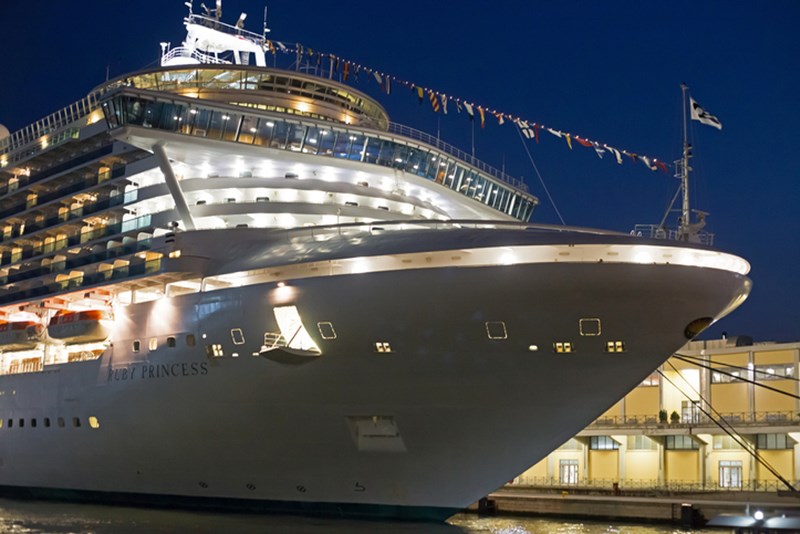Cruise carrier's liability for contagious diseases
October 2021
It was an ominous picture. The cruise ships that were anchored in the North Sea near the Dutch coastal village of Scheveningen during several months in 2020. The global pandemic hit the cruise industry very hard with significant consequences. Cruises were cancelled and crew members were ‘trapped’ on board, whilst the future was uncertain. Cruise ships had shown not to be immune to the pandemic; due to their nature (i.e. crowded semi-enclosed areas accommodating up to thousands of passengers) the coronavirus COVID-19 rapidly spread on board various ships. At some point in time, dozens of cruise ships had confirmed cases on board.[1]
The “Ruby Princess” was one of the vessels with an outbreak of disease on board. This cruise ship departed from Sydney on 8 March 2020 on its ill-fated voyage with some 2,600 passengers on board. Following the outbreak, the cruise was cut short and the ship returned to Sydney. A substantial numbers of passengers contracted the disease and some died. Some of the passengers and their descendants have meanwhile commenced proceedings against the time charter and owner/operator of the vessel before the courts of Australia. The proceedings are still pending.[2]
The question if and if so to what extent a carrier is liable for death or injury in case of a contagious disease on board a cruise vessel is an interesting one with wider relevance. This article deals with this issue from a Dutch law perspective.
The carrier’s liability under Dutch law
Carriage by sea
For all forms of carriage of passengers, the carrier’s liability for damage caused by death or injury from a Dutch law perspective is regulated by mandatory law. The carrier’s liability in case of carriage of passengers by sea is dealt with in three different instruments, being:
- the Protocol of 2002 to the Athens Convention relating to the Carriage of Passengers and their Luggage by Sea, 1974 (‘PAL’);
- Regulation (EC) No. 392/2009 of the European Parliament and of the Council of 23 April 2009 on the liability of carriers of passengers by in the event of accidents (‘Regulation’);
- Section 8.5.3. (Agreement of carriage of passengers by sea) of Book 8 of the Dutch Civil Code (‘DCC’).
Although these instruments each have their own scope of application, the liability regime in case of death or injury of passengers is (largely) the same. Liability under these instruments is channelled toward the carrier, i.e. the person by or on behalf of whom a contract of carriage has been concluded, and the performing carrier (if any), i.e. the owner, charterer or operator of a vessel who actually performs the whole or a part of the carriage. To establish liability of the carrier under the PAL, Regulation and DCC it is relevant to ascertain whether the death or injury is the result of a ‘shipping incident’. A ‘shipping incident’ is defined as shipwreck, capsizing, collision or stranding of the ship, explosion or fire in the ship, or defect in the ship. All other causes are ‘non-shipping incidents’. Examples of ‘non-shipping incidents’ are food-poisoning resulting from the buffet on board and a wrist injury suffered while shuffle boarding on the sundeck. A contagious disease contracted on board in principle also qualifies as the result of a ‘non-shipping incident’.
For losses suffered as a result of the death or personal injury to a passenger caused by a ‘shipping incident’, the carrier is strictly liable up to an amount of SDR 250,000 per passenger on each distinct occasion.[3] The carrier can evade liability only in certain very specific circumstances, such as terrorism. If and to the extent that the loss exceeds SDR 250,000, the carrier shall be further liable unless the carrier proves that the ‘shipping incident’ which causes the loss occurred with the fault or neglect of the carrier. The liability of the carrier for the death of or personal injury shall in no case exceed SDR 400,000 per passenger on each distinct occasion.
The carrier’s liability for a ‘non-shipping incident’ is also limited to SDR 400,000 per passenger on each distinct occasion. The difference with ‘shipping incidents’ is that this is not a strict liability. The carrier shall only be liable if the ‘non-shipping incident’ which caused the death or the personal injury was due to the fault or neglect of the carrier. The burden of proving fault or neglect shall lie with the claimant. Thus, when a passenger contracts a contagious disease on board it is up to him to prove that this was the result of the fault or neglect of the carrier. Passengers will need to collect evidence to prove inter alia that the necessary preventive measures were (timely) in place to prevent the spread of the disease or that the medical care on board was insufficient.
Inland waterways
The situation for infected passengers and their descendants under Dutch law is not that much different when lodging claims against carriers of passengers by inland waterways.
The inland waterway carrier is only liable for death or injury of the passenger, if the loss is caused by the carrier’s fault or neglect. This means that the passenger has to prove that the contagious disease contracted on board was caused by a circumstance which a diligent carrier could have avoided or by a circumstance the consequences of which such a carrier could not avoid. This actually means that the passenger would have to prove that the carrier did not take all measures to prevent the death or the personal injury due to the contagious disease. When liable, the carrier’s liability is also limited to SDR 400,000 per passenger.
Conclusion
The pandemic is dominating the headlines now for over a year and a half. We all look forward to the time when the imposed health measure are relics of a bygone era. It cannot be excluded that the pandemic will be on the courts’ docket long after that time. The discussion about the allocation of liability (if any) for the consequences of the pandemic will likely take some time. The question to be answered when it comes down to the allocation of liability of the carrier of passengers by sea or inland waterway, at least under Dutch, is whether the death or personal injury resulting from the pandemic was due to the fault or neglect of the carrier. It is up to the passenger to prove that it was.
Should you have any further questions concerning the liability of carriers for death or personal injury of passengers, please do not hesitate to contact us.
* * *
[1] For an overview of all vessels with confirmed cases ‘COVID-19 pandemic on board on cruise ships’ (10 October 2021). In Wikipedia. https://en.wikipedia.org/wiki/COVID-19_pandemic_on_cruise_ships.
[2] See Karpik v Carnival plc (The Ruby Princess) (Stay Application) [2021] FCA 1082 (link)
[3] ‘SDR’ is the abbreviation of Special Drawing Right, are supplementary foreign exchange reserve assets defined and maintained by the International Monetary Fund (IMF). On 10 October 2021, one SDR is approximately EUR 1,20.

